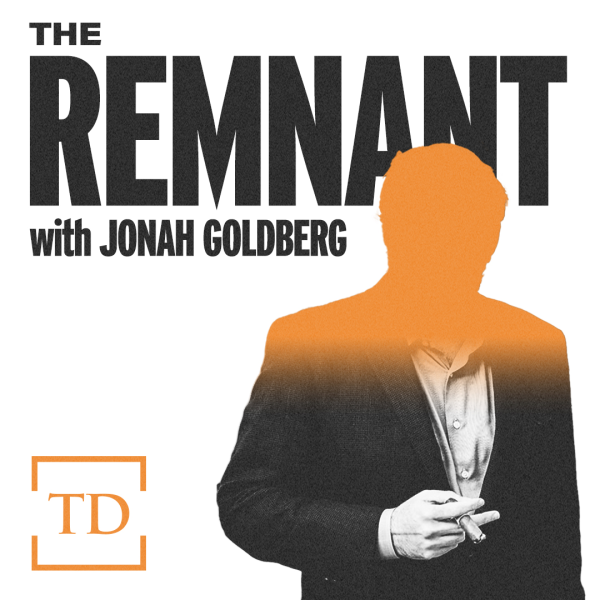A president can encounter a crisis on any day of their presidency, but what if that crisis comes on Day 1? How is a new president equipped with the background information to help navigate the job right away?
The answer: The Office of the Director of National Intelligence (ODNI) provides intelligence briefings to presidential candidates while they are still on the campaign trail. These briefings can include classified information, albeit with particular controls in place.
This election, the country finds itself in uncharted waters—since one of the candidates has been charged with mishandling classified information in the recent past—but some precedents and guardrails might help explain what will happen.
What’s the history and purpose of presidential candidate intelligence briefings?
Intelligence briefings on the campaign trail date back to 1952, when outgoing President Harry S. Truman recognized the need to bring then-candidate Dwight Eisenhower up to speed well before Inauguration Day. According to John L. Helgerson, who literally wrote the book on intelligence briefings to presidential candidates, Truman recognized the steep learning curve for a new president. He sought to remedy this by initiating the practice of delivering intelligence briefings to incoming candidates. Since then, every major presidential nominee has received some form of intelligence briefing.
Well before Election Day, but after party conventions where nominees are made official, the ODNI reaches out to campaigns to offer a general intelligence briefing. In the words of Thomas Fingar, a deputy director of national intelligence in the George W. Bush administration, the ODNI will “offer substantive briefings at a time and place of their choosing.” The goal is transparency. “If one campaign asks for something or receives something, we notify the other.”
Why go through the process of briefing a presidential candidate? “We conduct intelligence to help reduce uncertainty for our national security decision maker,” James Clapper, the director of national intelligence in the Obama administration, said in 2016. “That’s why we briefed each of the presidential and vice presidential candidates this summer and fall, to help reduce uncertainty for our next president, so that he or she steps into the Oval Office with as good of an understanding of our complex and uncertain world as we can provide them.”
From a legal perspective, pre-election intelligence briefings are purely a matter of custom, courtesy, and tradition. There is no statutory requirement for these briefings to occur before Election Day. This is in contrast to post-election briefings to the president-elect, which is a legal requirement under the Intelligence Reform and Terrorism Prevention Act of 2004.
What are the precautions surrounding these briefings?
With the exception of the candidates themselves, all recipients of these briefings must hold a security clearance. This strange exception is confirmed by the Congressional Research Service in a report on security clearances, which states that since the criteria for eligibility for the presidency is laid out in the Constitution, “no additional criteria (e.g., holding a security clearance) may be required.” In the past, campaigns have initiated the process for securing clearances for campaign advisers, potential nominees, and staff well before Election Day. With few exceptions, only the two major party nominees and their running mates have received pre-election intelligence briefings. In 2016, the Obama administration did not offer intelligence briefings to Green Party nominee Jill Stein or Libertarian Party nominee Gary Johnson, and neither candidate requested one. There are very few examples of a third party candidate receiving an intelligence briefing, such as American Independent Party nominee George Wallace in 1968 and John Anderson in 1980 as an independent candidate.
When it comes to the content of the briefings themselves, intelligence officials have the discretion to withhold certain classified topics or details. Helgerson mentions in his book that in 2016 Trump was not briefed on current covert actions until after being sworn in. Generally speaking, briefings to the candidates in the pre-election period do not include intelligence operational matters or discussions of policy. The topics covered in these briefings typically parallel the publicly available Annual Threat Assessment published by the ODNI. Candidates can expect to hear much about state actors (China, Russia, Iran), as well as transnational issues (terrorism, trafficking, organized crime).
The Partnership for Public Service, a nonpartisan nonprofit, runs the Center for Presidential Transition and describes such briefings as “analytic.” So there are no “operations discussed, no covert actions discussed, no sources and methods discussed. It’s simply what do we see as the threats.” Intelligence can often be separated from the sources and methods used to gather it. The true damage from intelligence leaks comes when a source or a method of collection is revealed. When it comes to presidential candidate briefings, the sources and methods are almost always excluded.
In addition to clearances and content, the pre-election briefings are given in secure government facilities. Interestingly, post-election briefings for the incoming president-elect have been conducted outside of a sensitive compartmented information facility, known as a SCIF. In 2016, President-elect Trump received several briefings during his 10-week transition period in a conference room in Trump Tower in Manhattan. He also received three briefings at Mar-a-Lago in Florida. However, his two pre-election briefings were both conducted at an FBI office in New York, according to Helgerson. Present with Trump at these pre-election briefings were Chris Christie and Michael Flynn. Mike Pence was briefed twice before the election as well and included Josh Pitcock and Nick Ayers at his briefings.
Are there concerns about Donald Trump receiving briefings in 2024?
From a partisan perspective, raising concerns about the trustworthiness of the other party’s candidate is nothing new. In 2016, then-House Speaker Paul Ryan requested that then-candidate Hillary Clinton be blocked from classified intelligence briefings after she was found to have mishandled classified material by using a personal email server. But Clinton was never formally charged with mishandling classified information, whereas former President Trump has been indicted. Regardless, there is no legal guidance either way. The ODNI can provide candidate Trump with the briefings, or it can choose not to. Either choice is within the bounds of the law.
A former CIA case officer recently explained to Politico that the risks of withholding intelligence briefings from Trump are politically dangerous. “If the White House didn’t give the briefing for political or legal reasons, it could backfire on the intelligence community ‘and taint them in the eyes of somebody who might very well be their boss again in a few months,’ he said.” Politically, there are also the questionable optics of Trump receiving intelligence briefings while on trial for mishandling classified material in the past. But these concerns are political—no law compels or forbids the Biden administration from proceeding in either direction. If Trump receives briefings that are sanitized and watered down to the point that he is hearing solely publicly available information, this may still hurt the intelligence community in the long run by further undermining its relevance in Trump’s eyes. It appears that the current administration has determined that the risks of providing briefings to the Trump campaign outweigh the costs of withholding them.
Atlantic staff writer Tom Nichols makes the case for withholding the briefings in spite of the risks. “Trump is an anti-American, debt-ridden, unstable man who has voiced his open support for violent seditionists,” he wrote last month. “If he were any other citizen asking for the privilege of handling classified material, he would be sent packing.” His opinion echoes that of many lawmakers and pundits, who fear that Trump would misuse the information provided in these briefings.
In their commentary on CNN, a former director of the Executive Office of National Security at the Department of Justice and a former federal prosecutor argue for the middle ground approach. That is, give the briefings, but add some guardrails. Their recommendations include limiting the briefing to Trump alone (with no aides present) as well as giving the briefing orally with no documents being given to Trump.
What’s the bottom line?
Providing pre-election intelligence briefings is a custom and a courtesy—not a law. Nonetheless, Biden and his administration have indicated that they intend to continue this tradition with presidential candidate Trump. This is the same administration that previously prohibited Trump from receiving the intelligence briefings that are usually offered to former presidents. It remains to be seen what will happen post-election in the event of a Trump victory. But the law is far clearer after November 5. If the Electoral College hands Trump the presidency for a second time, then it would appear that the Biden administration will have to trust the president-elect with the country’s secrets once more as well.








Please note that we at The Dispatch hold ourselves, our work, and our commenters to a higher standard than other places on the internet. We welcome comments that foster genuine debate or discussion—including comments critical of us or our work—but responses that include ad hominem attacks on fellow Dispatch members or are intended to stoke fear and anger may be moderated.